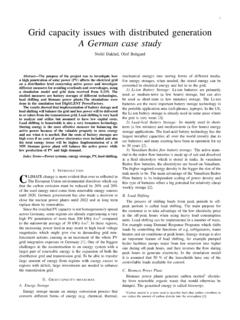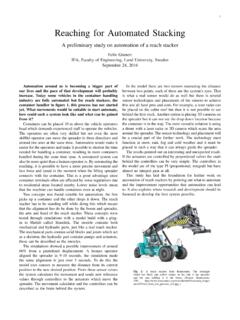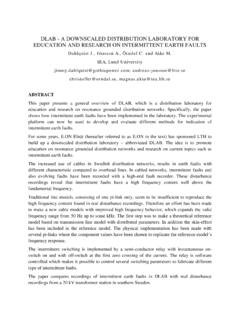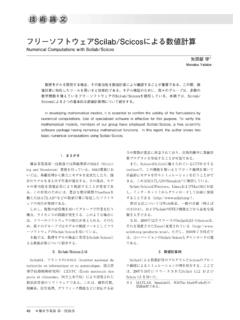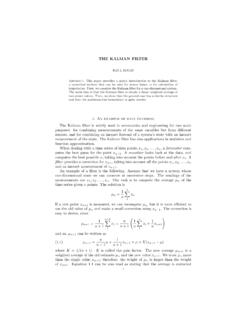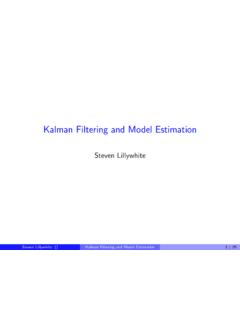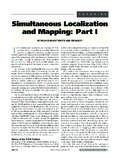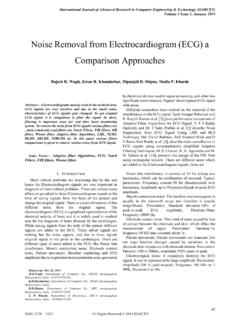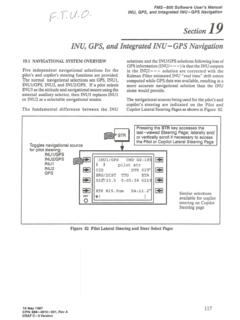Transcription of Estimation of Vehicle Roll Angle - Lund University
1 Estimation of Vehicle roll Angle Haldex Traction can with their Active Yaw Control prevent unwanted handling when driving a Vehicle , by applying an extra torque with their all wheel drive system. To be able to calculate when and how this torque should be applied, it is important to the state information of the Vehicle . When driving on banked roads, Vehicle dynamics and sensor measurements are changed compared to when driving on a flat surface. Because of this it is desirable to know the road banking or Vehicle roll Angle .
2 The Vehicle roll Angle was estimated using sensors already existing in modern production cars; lateral acceleration , longitudinal speed , yaw rate and front wheel Angle . The acceleration and yaw rate sensors are positioned in the Vehicle s center of gravity. This is also the origin of the right hand based coordinate system used for defining sign convention. Thus the x-axis points forward, the y-axis to the left and the z-axis upwards. The acceleration measured by the acceleration sensor occurs due to lateral forces on the tires when cornering and due to gravity affecting the sensor when the Vehicle rolls around the x-axis.
3 Yaw rate is the angular velocity the Vehicle has around the z-axis. Thus the yaw rate sensor will measure how fast the Vehicle is turning. Theoretical solution The lateral accelerometer is, when tilted around the x-axis (travel direction), influenced by the normal forces acting on the Vehicle due to gravity. By knowing how much the roll Angle can be calculated. Unfortunately there are more accelerations acting at the accelerometer; centripetal force and lateral speed derivative.
4 The centripetal force occurs when an object follows a curved path. The force is always directed towards the center of curvature of the path. Lateral speed are present due to lateral slip when turning, it is often very small, but will influence the accelerometer greatly when making sudden turns. The equation for the Angle calculation becomes: (1) It is derived from the accelerations acting on the Vehicle driving in a banked curve, as seen in Fig 1.
5 It is important to separate the environmental coordinate system denoted with an apostrophe, from the Vehicle coordinate system. Figure 1 - Accelerations acting on Vehicle in a banked curve When testing the equation in a Vehicle simulator at Haldex called VehSim, eq. (1) performed as seen in Fig. 2. The test simulation Vehicle was in this test driving in a 180 degree turn with a road banking of 20 degrees with start and finish at 0 degrees.
6 Figure 2 - Vehicle chassis roll Angle All units in eq. (1) are measured with sensors in the car. The problem is to obtain a good Estimation of . Without this parameter the roll Angle Estimation will deviate several degrees when sudden turns are made. Vehicle model By using a simple bicycle model, representing a Vehicle , the lateral acceleration can be estimated. Figure 3 shows an overview of the forces and velocities acting on a Vehicle represented as a two-wheel bicycle model.
7 When a Vehicle turns, slip angles will be present due to lateral velocity. The slip angles can be calculated using longitudinal-, lateral-velocity, yaw rate, length to the center of gravity and front wheel Angle . If having the slip angles, lateral tire forces can be calculated using a tire formula that gives the relationship between slip Angle and lateral tire force. There are many different tire models with different properties. Fig. 4 shows results of the lateral force obtained with the three most common models; linear, exponential and magic formula.
8 Figure 4 Lateral forces with respect to slip Angle The magic formula gives the results that are closest to the real forces if they are measured. The downside with the magic formula is that it is very complex and computationally heavy. While the slip Angle is small, all models perform similar. When the slip Angle grows the linear model performs poorly while the exponential model still achieves acceptable results. The friction coefficient ( ) is another key parameter used to estimate the lateral forces.
9 This parameter gives the friction relationship between the tire and the surface that the tire is on. In Fig. 5 the relation between the friction coefficient and lateral tire force is show. Figure 5 Lateral force with respect to friction Figure 3 - Bicycle model Based on the estimated lateral forces the dynamics of the Vehicle can be determined. Observer The model is unfortunately not perfect since it is a simplified version of a Vehicle . This will cause the estimated dynamics to differ from the real dynamics.
10 The results from the model can be improved by adding an observer. The observer will make the model converge towards the real dynamics by correcting it. The correction is based on the predicted parameter value from the model compared with the measured value like the Fig. 6 shows. Figure 6 Basic function of an observer There are different observers with different properties and complexity. One often used observer is the Kalman filter, which can be modified to an Extended Kalman Filter to handle nonlinear systems.
